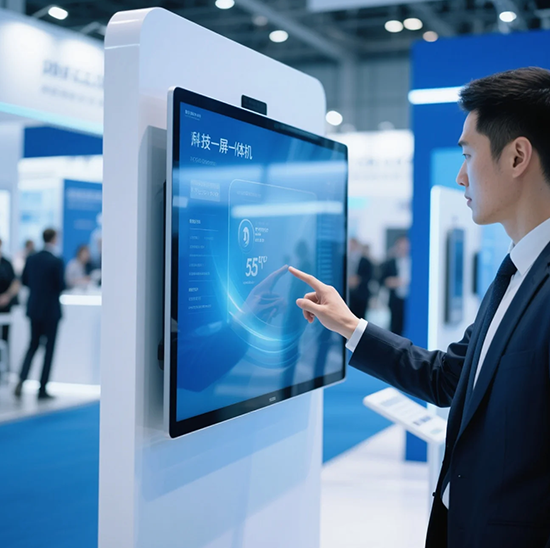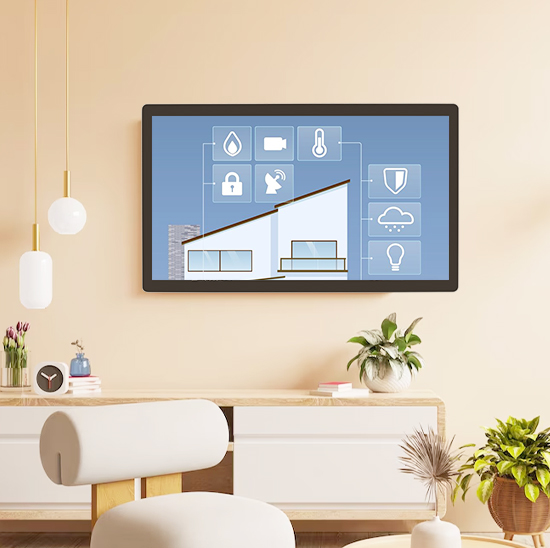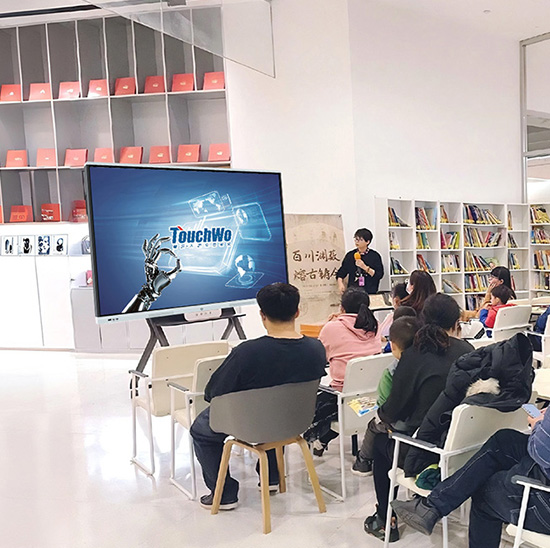Les écrans tactiles capacitifs font partie intégrante des appareils modernes, Fournir une expérience utilisateur sans couture et réactive. Des smartphones aux écrans interactifs, Cette technologie a révolutionné la façon dont nous interagissons avec l'électronique. Comprendre le fonctionnement des écrans tactiles capacitifs - de leurs composants à leurs principes de fonctionnement - peut vous aider à prendre des décisions éclairées lors du choix de la bonne technologie pour vos produits. Dans cet article, Nous explorerons les principes fondamentaux des écrans tactiles capacitifs, leurs composants clés, Pour les avantages et les inconvénients, et leurs applications de grande envergure dans le paysage technologique d'aujourd'hui.
Qu'est-ce qu'un écran tactile capacitif?
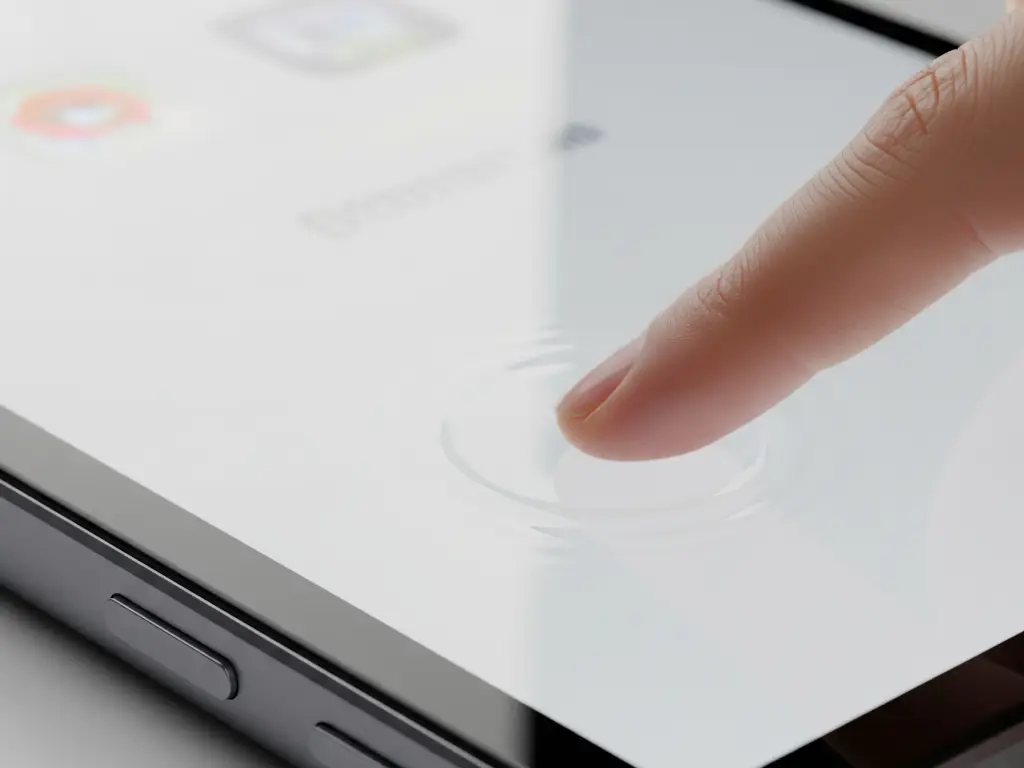
Un écran tactile capacitif est un type de technologie d'affichage sensible au toucher qui utilise les propriétés électriques du corps humain pour détecter le toucher. Contrairement aux écrans tactiles résistifs, qui reposent sur la pression physique, Le registre des écrans tactiles capacitifs touche à travers l'altération d'un champ électrostatique à la surface de l'écran.
Les écrans tactiles capacitifs sont composés de plusieurs couches, avec un matériau conducteur (généralement de l'oxyde d'étain et d'indium, ou ito) placé sur un substrat transparent, généralement verre. Ces couches forment une grille qui génère un champ électrique sur l'écran. Lorsqu'un utilisateur touche l'écran, La charge électrique naturelle du corps modifie le champ au point de contact, Permettre à l'écran tactile de détecter le toucher.
Pour mieux comprendre comment fonctionne cette technologie à un niveau plus profond, Explorons les principes de travail de base des écrans tactiles capacitifs dans la section suivante.
Composants clés d'un écran tactile capacitif et de leurs fonctions

Un écran tactile capacitif se compose de plusieurs composants clés qui travaillent ensemble pour détecter l'entrée tactile avec précision. Comprendre ces composants est essentiel pour saisir la technologie derrière les écrans tactiles capacitifs.
1. Couche conductrice (Cette couche)
La couche conductrice est généralement fabriquée à partir d'oxyde d'étain d'indium (CE), qui est transparent et conducteur. Cette couche est responsable de la création du champ électrique à travers la surface de l'écran tactile. Lorsqu'un doigt ou un objet conducteur touche l'écran, il change le champ électrostatique, Permettre au système de détecter le toucher.
2. Substrat de verre
Le substrat en verre sert de base à l'écran tactile, Fournir un soutien structurel et une durabilité. Le verre est généralement recouvert de la couche ITO conductrice, qui est mince et flexible mais toujours assez fort pour protéger l'affichage.
3. Capteurs tactiles
Ces capteurs sont stratégiquement placés pour détecter le changement de capacité causé par le toucher. Ils sont organisés en grille ou en matrice, qui permet au système de suivre plusieurs points de contact (multi-touch) simultanément. Plus il y a de capteurs, Plus la détection tactile devient précise.
4. Manette
Le contrôleur est l'unité de traitement de base de l'écran tactile. Il surveille en continu le champ électrostatique à l'écran et détecte toutes les variations causées par le toucher. Le contrôleur traite ensuite ces données, détermine l'emplacement du toucher, et envoie les informations au processeur de l'appareil.
5. Panneau d'affichage
Le panneau d'affichage est la dernière couche de l'écran tactile, qui montre l'interface ou le contenu avec lequel l'utilisateur interagit. L'affichage fonctionne en collaboration avec l'écran tactile pour offrir une expérience réactive et interactive.
Les principes de travail de base de la fonctionnalité à écran tactile capacitif
Les écrans tactiles capacitifs détectent le toucher à travers les principes de la capacité et les propriétés électriques du corps humain. Voici une ventilation étape par étape du fonctionnement de la technologie:
1. Capacitance: La possibilité de stocker les charges électriques
La capacité se réfère à la capacité de stocker une charge électrique entre deux matériaux conducteurs. Dans les écrans tactiles capacitifs, Un champ électrostatique est créé à travers la surface, Et ce champ est uniformément distribué lorsque l'écran n'est pas utilisé. Le corps humain, être conducteur, peut modifier ce champ lorsqu'il entre en contact avec l'écran.
2. Détection du tactile: Le rôle de la couche conductrice
Lorsque vous touchez l'écran, ton doigt (ou un stylet conducteur) entre en contact avec la couche conductrice à l'écran. Cela crée un effet de couplage entre votre doigt et le matériau conducteur de l'écran. Le point de contact forme une nouvelle capacité, Changer le champ électrique local.
3. Transfert de charge ou modification actuelle
Au point de contact, Ce nouveau couplage électrique fait couler un petit courant vers le doigt (dans les écrans capacitifs de surface) ou modifie la capacité entre le point de contact et les électrodes (dans les écrans capacitifs projetés). Ce transfert de charge ou un changement de capacité est essentiel pour la détection du tactile.
4. Traitement du signal: Détecter le changement
Le contrôleur de l'écran tactile détecte les petits changements de courant ou de capacité. Le contrôleur traite ces signaux et reconnaît qu'une touche s'est produite.
5. Calcul de l'emplacement: Déterminer les coordonnées X et Y
En mesurant l'intensité et la position du changement de capacité, Le contrôleur calcule l'emplacement précis du toucher. Les coordonnées x et y du point de contact sont déterminées, qui permet au système d'enregistrer avec précision le toucher et de déclencher l'action correspondante.
6. Détection multi-touch
Les écrans capacitifs projetés sont équipés d'une grille dense de capteurs X-Y qui permettent une fonctionnalité multi-touch. Ces capteurs peuvent détecter simultanément plusieurs points de contact sur l'écran, Activer des gestes comme Pinch-to-Zoom, objets en rotation, ou même la frappe simultanée.
Pour les avantages et les inconvénients des écrans tactiles capacitifs

Avantages:
- Haute sensibilité: Les écrans tactiles capacitifs sont très réactifs, capable de détecter même les touches les plus légères. Ils offrent une expérience utilisateur rapide et précise, Les rendre idéaux pour des appareils comme les smartphones et les tablettes.
- Durabilité: La nature à l'état solide des écrans tactiles capacitifs (Pas de pièces mobiles) les rend moins sujets à l'usure par rapport aux écrans résistifs. Ils sont plus résistants aux rayures et aux dommages d'une utilisation répétée.
- Capacité multi-touch: Écran tactiles capacitif Prise en charge des gestes multi-touchés, qui permettent aux utilisateurs d'effectuer des actions complexes comme les objets pincés à zoom ou à rotation. Ce n'est pas possible avec les technologies d'écran tactile plus anciennes comme les écrans résistifs.
- Clarté et luminosité: Puisque les écrans tactiles capacitifs utilisent des couches conductrices minces, Ils offrent une transparence plus élevée et de meilleures performances optiques, résultant en clair, affichages lumineux.
Les inconvénients:
- Coût: Les écrans tactiles capacitifs ont tendance à être plus chers à fabriquer par rapport aux écrans tactiles résistifs, Ce qui peut rendre les appareils qui les utilisent plus chers.
- Nécessite une entrée conductrice: Les écrans capacitifs nécessitent une entrée conductrice, comme un doigt ou un stylet, Pour fonctionner. Objets non conducteurs, comme des gants ou certains stylus, ne peut pas enregistrer les entrées.
- Sensibilité aux facteurs environnementaux: Les écrans tactiles capacitifs peuvent parfois lutter dans des conditions météorologiques extrêmes, comme des températures très chaudes ou froides, qui peut affecter leur sensibilité.
Applications des écrans tactiles capacitifs dans les appareils modernes et les tendances futures
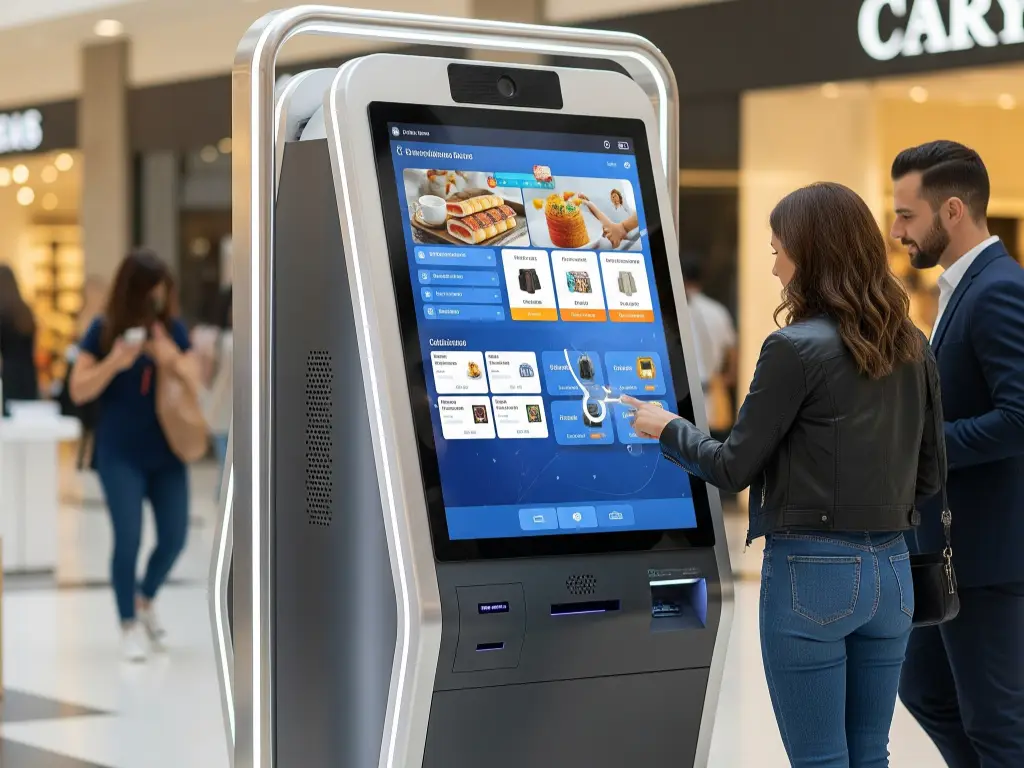
Les écrans tactiles capacitifs ont révolutionné la façon dont nous interagissons avec la technologie, Aller au-delà des boutons et des cadrans traditionnels pour fournir des, interfaces réactives. Aujourd'hui, Ils font partie intégrante de nombreuses industries, Et leurs futurs potentiels promet des expériences d'utilisateurs encore plus avancées et immersives.
Applications actuelles
Les écrans tactiles capacitifs deviennent de plus en plus une technologie essentielle dans divers secteurs. Vous trouverez ci-dessous certaines industries clés où les écrans tactiles capacitifs ont déjà un impact transformateur:
1. Smartphones et tablettes
L'application la plus répandue des écrans tactiles capacitifs est dans les appareils mobiles, y compris les smartphones et les tablettes. Leur capacité à détecter les gestes multi-touch, comme le pincement dans le zoom et le balayage, a fait d'eux le choix préféré pour les appareils mobiles, Permettre une expérience utilisateur intuitive et fluide. Ces écrans offrent une haute précision et un design élégant à la fois fonctionnel et esthétique.
2. Point de vente (PDV) Systèmes
Dans le commerce de détail et l'hôtellerie, Les écrans tactiles capacitifs ont remplacé les registres de trésorerie traditionnels, Fournir un traitement de transaction plus rapide et plus efficace. Ces systèmes sont souvent personnalisables, Permettre aux entreprises d'ajuster l'interface à leurs besoins spécifiques. La réactivité fluide et rapide des écrans capacitifs aide à réduire les temps d'attente pour les clients et améliore l'efficacité opérationnelle.
3. Affichages automobiles
Dans l'industrie automobile, Les écrans tactiles capacitifs remplacent les boutons mécaniques et les commutateurs dans les tableaux de bord, systèmes d'infodivertissement, et panneaux de contrôle. Ils offrent une plus grande flexibilité de conception et un plus moderne, interface conviviale. La précision du toucher capacitif permet une navigation intuitive de fonctionnalités telles que la navigation, divertissement, et le climat, Améliorer à la fois la sécurité et la commodité pour les conducteurs.
4. Soins de santé
Dans le secteur de la santé, Les écrans tactiles capacitifs sont utilisés dans les dispositifs médicaux, y compris l'équipement de diagnostic, systèmes de surveillance des patients, et dossiers médicaux numériques. Ces écrans tactiles offrent une sensibilité au toucher et une précision, Permettre aux professionnels de la santé d'interagir avec les appareils tout en maintenant l'hygiène et en minimisant le risque de contamination. Les écrans tactiles capacitifs sont particulièrement bénéfiques pour les dispositifs médicaux utilisés dans les environnements stériles, car ils peuvent être facilement nettoyés et fonctionner sans boutons physiques.
5. Équipement industriel
En milieu industriel, Les écrans tactiles capacitifs sont intégrés dans des équipements tels que les panneaux de commande, Interfaces de machines, et les systèmes de surveillance. Leur capacité à résister aux environnements durs, y compris l'exposition à la poussière, humidité, et des températures élevées, Les rend idéaux pour les applications industrielles. Les écrans tactiles capacitifs fournissent une interface fiable et durable pour les opérateurs, offrir une meilleure précision et une maintenance plus facile par rapport aux contrôles mécaniques traditionnels.
6. Éducation
Les écrans tactiles capacitifs transforment le secteur de l'éducation en améliorant l'expérience d'apprentissage interactive. Dans les salles de classe, Des tableaux blancs interactifs et des outils d'apprentissage numérique alimentés par des écrans tactiles capacitifs permettent un environnement d'enseignement plus engageant et plus dynamique. Les élèves peuvent interagir directement avec le matériel d'apprentissage, vidéos, et simulations, favoriser un meilleur engagement et améliorer la rétention des connaissances. En plus, Dans les paramètres d'apprentissage à distance, Les écrans tactiles capacitifs sont intégrés dans les tablettes et les ordinateurs portables, permettant des expériences éducatives plus interactives et personnalisées.

Tendances futures et applications émergentes
1. Affichages flexibles et pliables
Avec l'avènement des écrans flexibles et pliables, Les écrans tactiles capacitifs devraient jouer un rôle important dans la prochaine génération d'appareils portables. Les écrans flexibles permettent des smartphones et des tablettes pliables qui maintiennent la même sensibilité au toucher et la même précision, tout en offrant la commodité de plus grands écrans sous une forme compacte.
2. Technologie tactile sensible à la force
L'avenir des écrans tactiles capacitifs réside dans l'intégration des capacités de détection de force, Permettre aux écrans de détecter non seulement l'emplacement du toucher mais aussi la pression appliquée. Cela pourrait permettre des interactions plus sophistiquées, comme les fonctions d'écran variables basées sur l'intensité tactile - idéal pour le jeu, applications créatives, ou même des dispositifs médicaux où la sensibilité à la pression est importante.
3. Capteurs biométriques intégrés
À mesure que la sécurité devient une préoccupation croissante, L'intégration des écrans tactiles capacitifs avec des capteurs biométriques tels que l'empreinte digitale ou la reconnaissance faciale devrait croître. Les périphériques peuvent incorporer de manière transparente les empreintes digitales directement dans l'écran pour une sécurité améliorée, supprimer le besoin de boutons physiques ou de capteurs séparés.
4. Réalité augmentée (RA) et la réalité virtuelle (VR) Interfaces
Les écrans tactiles capacitifs joueront également un rôle essentiel dans les systèmes AR et VR. Dans les appareils futurs, Les utilisateurs peuvent interagir avec des objets virtuels via des interfaces tactiles intégrées dans l'affichage, Permettre des interactions utilisateur plus immersives et naturelles. Alors que les applications AR et VR continuent de se développer, la demande de très sensible, précis, et des écrans tactiles réactifs grandiront.
Dépannage des problèmes d'écran tactile capacitif communs et comment les résoudre
Voici un guide rapide sur certains des problèmes les plus courants que vous pourriez rencontrer avec des écrans tactiles capacitifs, ainsi que des solutions simples pour dépanner et les résoudre.
| Problème | Cause | Solution |
| Touche insensible | L'écran est sale, humidité, ou accumulation de poussière. | Nettoyez l'écran avec un tissu en microfibre. Assurez-vous qu'il n'y a pas d'humidité. |
| Emplacement tactile incorrect | Interférence électromagnétique, problème d'étalonnage logiciel. | Redémarrez l'appareil et recalibrez l'écran tactile si nécessaire. |
| Écran tactile congelant | Glitch ou surcharge du logiciel. | Fermer les applications inutiles, redémarrer l'appareil, ou effectuer une réinitialisation d'usine. |
| Échec multi-touch | Mauvais étalonnage du capteur ou dommage à l'écran tactile. | Recalibrer l'écran tactile ou remplacer l'écran endommagé. |
| Touche fantôme (Touches involontaires) | Contrôleur tactile défectueux, statique, ou dommages à l'écran. | Nettoyer l'écran, Assurer aucune accumulation statique, ou remplacer le panneau tactile. |
| Réponse inexacte ou retardée | Problème d'étalonnage ou interférence électrique. | Recalibrer l'écran tactile ou mettre à jour le logiciel de l'appareil. |
| Écran ne répond pas après les conditions humides | Eau ou humidité entre les couches. | Laissez l'appareil sécher complètement, ou le placer dans du riz pour absorber l'humidité. |
Si aucune des solutions ci-dessus ne fonctionne, cela peut indiquer un dysfonctionnement matériel, et l'appareil doit être envoyé pour réparation ou remplacement.
Contactez Touchwo pour des solutions à écran tactile capacitif premium
La technologie de l'écran tactile capacitif est la pierre angulaire des interfaces utilisateur modernes, offrant une grande précision, durabilité, et capacités multi-touch. À Touchwo, Nous nous spécialisons dans la fourniture de solutions à écran tactile capacitif de pointe adaptées pour répondre aux demandes de diverses industries. Que vous cherchiez à intégrer la technologie tactile dans l'électronique grand public, systèmes automobiles, ou dispositifs de soins de santé, Notre équipe d'experts est prête à vous aider à mettre en œuvre la solution parfaite pour vos besoins.
Contactez-nous aujourd'hui Pour en savoir plus sur nos produits et comment nous pouvons soutenir votre entreprise.

